 W
WCharles Angrand was a French artist who gained renown for his Neo-Impressionist paintings and drawings. He was an important member of the Parisian avant-garde art scene in the late 1880s and early 1890s.
 W
WHenri Alphonse Barnoin (1882–1940) was a French painter born in Paris in 1882.
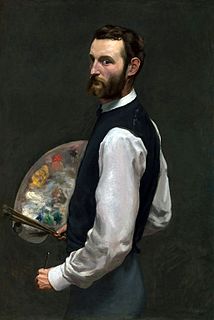 W
WJean Frédéric Bazille was a French Impressionist painter. Many of Bazille's major works are examples of figure painting in which he placed the subject figure within a landscape painted en plein air.
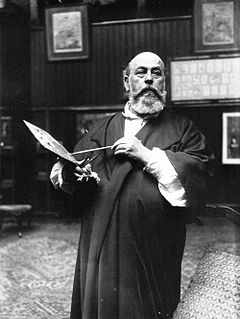 W
WPaul-Albert Besnard was a French painter and printmaker.
 W
WEugène Louis Boudin was one of the first French landscape painters to paint outdoors. Boudin was a marine painter, and expert in the rendering of all that goes upon the sea and along its shores. His pastels, summary and economic, garnered the splendid eulogy of Baudelaire; and Corot called him the "King of the skies".
 W
WMarie Bracquemond was a French Impressionist artist, who was described retrospectively by Henri Focillon in 1928 as one of "les trois grandes dames" of Impressionism alongside Berthe Morisot and Mary Cassatt. Her frequent omission from books on artists is sometimes attributed to the efforts of her husband, Félix Bracquemond.
 W
WLouise Catherine Breslau was a German-born Swiss painter, who learned drawing to pass the time while bedridden with chronic asthma. She studied art at the Académie Julian in Paris, and exhibited at the salon of the Société Nationale des Beaux-Arts, where she became a respected colleague of noted figures such as Edgar Degas and Anatole France.
 W
WGustave Caillebotte was a French painter who was a member and patron of the Impressionists, although he painted in a more realistic manner than many others in the group. Caillebotte was noted for his early interest in photography as an art form.
 W
WAdolphe-Félix Cals was a French portrait, genre, and landscape painter.
 W
WPaul Cézanne was a French artist and Post-Impressionist painter whose work laid the foundations of the transition from the 19th-century conception of artistic endeavor to a new and radically different world of art in the 20th century.
 W
WHenri Ernest Ponthier de Chamaillard, usually known as Ernest de Chamaillard, was a French artist, one of a group of painters who gathered in the Breton village of Pont-Aven.
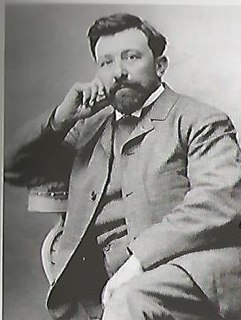 W
WEugène Henri Alexandre Chigot was a post impressionist French painter. A pupil of his father, the military painter Alphonse Chigot, in 1881 he entered the internationally renowned École des Beaux-Arts in Paris where he was exposed to the ideas of the realist movement of the Barbizon School and to Impressionism. He settled in Étaples in the Pas-de-Calais in an artists’ colony, later returning to Paris where he became a founder of the Salon d’Automne. An official military painter he painted a series of canvases in Calais and Nieuport recording the destruction caused by the First World War.
 W
WFrédéric Samuel Cordey (1854–1911) was a French landscape painter who was a part of the Impressionist movement. He was a close friend of Auguste Renoir, and had a personal fortune that allowed him to work according to his taste, regardless of the publicity and support provided by art dealers.
 W
WEdgar Degas was a French Impressionist artist famous for his pastel drawings and oil paintings.
 W
WRobert Delaunay was a French artist who, with his wife Sonia Delaunay and others, co-founded the Orphism art movement, noted for its use of strong colours and geometric shapes. His later works were more abstract. His key influence related to bold use of colour and a clear love of experimentation with both depth and tone.
 W
WRaoul Dufy was a French Fauvist painter, brother of Jean Dufy. He developed a colorful, decorative style that became fashionable for designs of ceramics and textiles, as well as decorative schemes for public buildings. He is noted for scenes of open-air social events. He was also a draftsman, printmaker, book illustrator, scenic designer, a designer of furniture, and a planner of public spaces.
 W
WHenri-Julien Dumont was a French impressionist painter, born in Beauvais, Oise. His works were exhibited at the Salon and the Société des Artistes Indépendants. Henri-Julien Dumont's paintings were rewarded in 1900 with a bronze medal at the Universal exhibition.
 W
WJulien Gustave Gaillardin, known as Julien Gustave Gagliardini was a French Impressionist landscape painter and engraver.
 W
WAlbert Gleizes was a French artist, theoretician, philosopher, a self-proclaimed founder of Cubism and an influence on the School of Paris. Albert Gleizes and Jean Metzinger wrote the first major treatise on Cubism, Du "Cubisme", 1912. Gleizes was a founding member of the Section d'Or group of artists. He was also a member of Der Sturm, and his many theoretical writings were originally most appreciated in Germany, where especially at the Bauhaus his ideas were given thoughtful consideration. Gleizes spent four crucial years in New York, and played an important role in making America aware of modern art. He was a member of the Society of Independent Artists, founder of the Ernest-Renan Association, and both a founder and participant in the Abbaye de Créteil. Gleizes exhibited regularly at Léonce Rosenberg's Galerie de l’Effort Moderne in Paris; he was also a founder, organizer and director of Abstraction-Création. From the mid-1920s to the late 1930s much of his energy went into writing, e.g., La Peinture et ses lois, Vers une conscience plastique: La Forme et l’histoire and Homocentrisme.
 W
WPaule Gobillard was a French artist and Post-Impressionist painter who was heavily influenced by the Impressionists. She is the niece of Berthe Morisot and Eugène Manet, the brother of Édouard Manet, who taught her lessons in painting as part of her education upon being orphaned at an early age. She was unknown in the art scene compared to her relatives. She exhibited with the Société des Indépendants in 1904 and in 1926.
 W
WEva Gonzalès was a French Impressionist painter.
 W
WJoseph Benoît Guichard was a French painter and art teacher who worked in a variety of styles.
 W
WArmand Guillaumin was a French impressionist painter and lithographer.
 W
WJean-Baptiste-Antoine Guillemet was a French renowned landscape painter and longtime Jury member of the Salon des Artistes Francais. He was one of the first 19th-century artists to paint modern life, and a pivotal figure in the transition from Realism to Impressionism.
 W
WHenri Eugène Augustin Le Sidaner who was a contemporary of the Post-impressionists, was an intimist painter known for his paintings of domestic interiors and quiet street scenes. His style contained elements of impressionism with the influences of Édouard Manet, Monet and of the Pointillists discernible in his work. Le Sidaner favoured a subdued use of colour, preferring nuanced greys and opals applied with uneven, dappled brushstrokes to create atmosphere and mysticism. A skilled nocturne painter he travelled widely throughout France and Europe before settling at Gerberoy in the Picardy countryside from where he painted for over thirty years.
 W
WLudovic-Napoléon Lepic was a French artist, archaeologist and patron of the arts. He was styled as Vicomte Lepic until his father's death in 1875, when he succeeded to the title of Comte Lepic. He is best remembered today as a friend of Edgar Degas, who included him in some eleven paintings and pastels. He was among the original Impressionist group and later became a recognised marine painter.
 W
WÉdouard Manet was a French modernist painter. He was one of the first 19th-century artists to paint modern life, and a pivotal figure in the transition from Realism to Impressionism.
 W
WLouis Alphonse Maureau born in New Orleans, was a Franco-American Impressionist painter.
 W
WBlanche Hoschedé Monet was a French painter who was both the stepdaughter and the daughter-in-law of Claude Monet.
 W
WOscar-Claude Monet was a French painter, a founder of French Impressionist painting and the most consistent and prolific practitioner of the movement's philosophy of expressing one's perceptions before nature, especially as applied to plein air landscape painting. The term "Impressionism" is derived from the title of his painting Impression, soleil levant, which was exhibited in 1874 in the first of the independent exhibitions mounted by Monet and his associates as an alternative to the Salon de Paris.
 W
WAdolphe Étienne Auguste Moreau-Nélaton was a French painter, art collector and art historian. His large collection is today held in its entirety by French national museums.
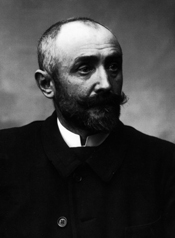 W
WHenry Moret was a French Impressionist painter. He was one of the artists who associated with Paul Gauguin at Pont-Aven in Brittany. He is best known for his involvement in the Pont-Aven artist colony and his richly colored landscapes of coastal Brittany.
 W
WBerthe Marie Pauline Morisot was a painter and a member of the circle of painters in Paris who became known as the Impressionists.
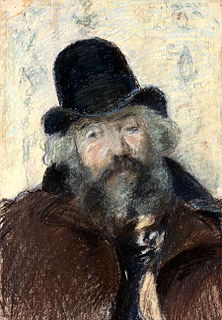 W
WLudovic Piette-Montfoucault was a French Impressionist painter.
 W
WCamille Pissarro was a Danish-French Impressionist and Neo-Impressionist painter born on the island of St Thomas. His importance resides in his contributions to both Impressionism and Post-Impressionism. Pissarro studied from great forerunners, including Gustave Courbet and Jean-Baptiste-Camille Corot. He later studied and worked alongside Georges Seurat and Paul Signac when he took on the Neo-Impressionist style at the age of 54.
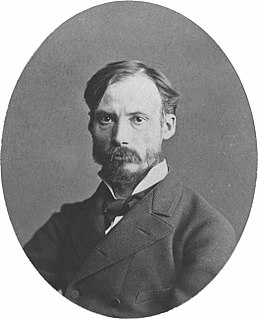 W
WPierre-Auguste Renoir, was a French artist who was a leading painter in the development of the Impressionist style. As a celebrator of beauty and especially feminine sensuality, it has been said that "Renoir is the final representative of a tradition which runs directly from Rubens to Watteau."
 W
WJules Alphonse Ernest Renoux was a French painter working during the height of French Impressionism and the Belle Epoque.
 W
WStanislas-Henri Rouart was a French industrialist, impressionist painter, and art collector. His son Ernest married the painter Julie Manet.
 W
WAlfred Sisley was an Impressionist landscape painter who was born and spent most of his life in France, but retained British citizenship. He was the most consistent of the Impressionists in his dedication to painting landscape en plein air. He deviated into figure painting only rarely and, unlike Renoir and Pissarro, found that Impressionism fulfilled his artistic needs.
 W
WAlfred Smith (1854–1932) was a French artist from Bordeaux who painted in the impressionist, post-impressionist and fauvist style. Some of his works resemble the early works of Claude Monet.
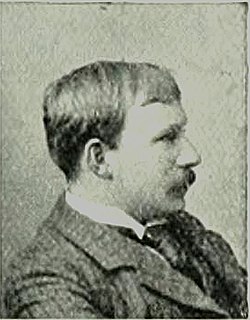 W
WEugène Lawrence Vail or simply Eugène Vail, was a French-American painter; best known for his works of village scenes in the Impressionistic style.
 W
WPierre Adolphe Valette was a French Impressionist painter. His most acclaimed paintings are urban landscapes of Manchester, now in the collection of Manchester Art Gallery. Today, he is chiefly remembered as L. S. Lowry's tutor.
 W
WGeorges Valmier was a French painter. His work encompassed the great movements in the modern history of painting, starting with Impressionism in his early years, then Cubism which he discovered when he was around 25 years old, and finally Abstractionism from 1921. He also designed sets and costumes for theater and ballet, and models for fabrics, carpets, and other objects. His oil paintings do not exceed 300 in number, since Valmier died prematurely at the age of 51. His paintings were the culmination of many preparatory drafts in gouaches, multiple versions of which are works in themselves and reflect his penchant for colors and remarkably inventive shapes. Valmier was also a musician, he performed the works of Debussy, Ravel, Fauré, and Satie at major concerts and in churches, and had a decisive influence on the career of André Jolivet.
 W
WPaul Vogler was a French painter in the Impressionist style, known mostly for his landscapes.